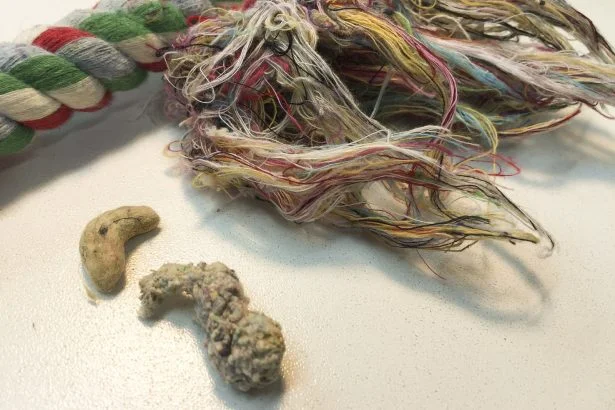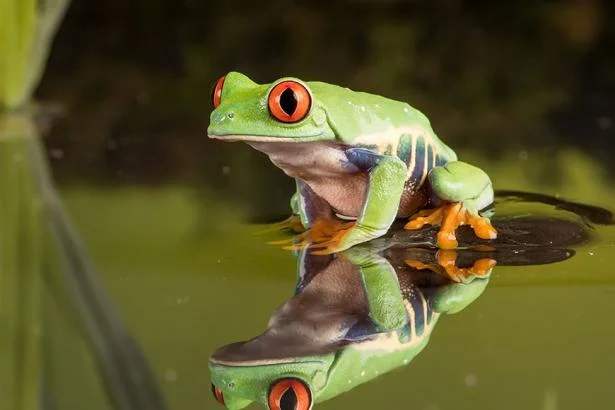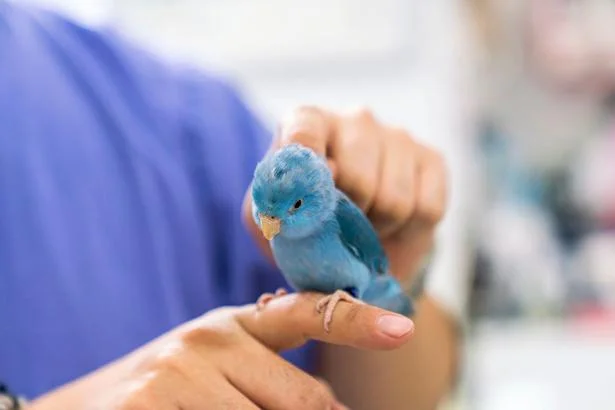Wildlife and avian veterinarians are frequently confronted by well-meaning members of the public who have found a “tame” lorikeet beside the road, in their back yard or in the local park. However, very rarely is it a “tame” lorikeet (i.e. an escaped pet), more often it is a wild bird that is suffering from misadventure or disease. The escaped pet lorikeet is easily distinguished from the “sick”, wild bird. The escaped pet often has a leg ring or a wing trim or it talks. The escaped pet will fly into your house and land on your shoulder. Whereas, wild lorikeets both adults and juveniles that are able to be picked up by humans, are victims of trauma or infections.
Adult lorikeets have orange beaks and have long, fully developed, flight and tail feathers. Lorikeets fly swiftly and don’t recognize panes of glass. Many adult lorikeets found on the ground are often suffering from concussion from having hit a window at full speed. If you witness a lorikeet hitting a window pane and falling, concussed, to the ground, the best first aid is to put it into a cardboard box. The enclosed box is warm, dark and quiet and the bird can safely recover consciousness without hurting itself further. A lot of concussed lorikeets resume consciousness within 10 to 15 minutes and fly away as good as new. If the bird remains limp or disoriented, you will need to seek appropriate veterinary attention.
Just as adult lorikeets often fly into windows, they also can fly low over highways and main roads and are hit by cars. This is another reason why wild birds are able to be approached and handled by humans. Lorikeets hit by cars need to be taken to a recognized wildlife hospital, your local vet or wildlife carer.
It’s not only the adult lorikeets which encounter misadventure that puts them in the hands of humans fledgling lorikeets also frequently come to grief. Juvenile lorikeets have dark beaks and contrary to popular belief also have fully developed wing and tail feathers. These young birds are often found by members of the public when they run into problems during their first flights. If you do find a young lorikeet, check that it does have fully developed wing and tail feathers and that it is uninjured. If this is the case, it will fly away to follow the adults in the flock.
However, one of the most common reasons why people feel that they have found a “tame” lorikeet is that many juvenile lorikeets are affected by psittacine beak and feather disease syndrome or circovirus. Young lorikeets suffering from this condition do not grow their long flight feathers or long tail feathers. They appear to be “stubby” or “cut off” when compared to their adult counterparts. As a result they cannot fly. They are often called “runners” because they run along the ground. This disease is a very contagious, viral infection. It can be transmitted to other birds through feather dust, droppings and crop secretions and it cannot be treated or cured because it is a virus. It is resistant to most disinfectants. Many people who rescue these affected birds are unaware of the seriousness of the disease because after a few months, the “runner” lorikeet appears to recover and regrow the lost feathers. However, the danger is that these birds are probably carriers of the disease and will affect other birds that they are placed in contact with. If you do find a “runner”, juvenile lorikeet, take it to your local wildlife hospital or local veterinarian. Unfortunately, these birds should be euthanized to prevent the spread of the disease.
By all means assist sick or injured wild birds. However, be aware that they are sick or injured and not “tame”. The best equipment for handling wild birds is a towel and a cardboard box. The towel enables you to pick up the bird without being bitten and the cardboard box is a dark and safe temporary resting place for the bird until suitable help is available. Always contact your local vet, wildlife organization or registered wildlife hospital (e.g. Currumbin Sanctuary Wildlife Hospital or Australia Zoo Animal Hospital). It is illegal to keep a wild bird as a pet. Don’t be tempted to make a pet of the cute little Juvenile “runner” lorikeet. You will be endangering any other bird that you or it comes into contact with. Injured and sick lorikeets or any other wild birds should be treated professionally and appropriately and released back into the wild wherever possible.
© Peter Wilson July 2010
Information supplied by (c) Currumbin Valley Vet Services August 2010
FAQs
First, observe the bird’s behaviour. If it appears tame but is lethargic or unresponsive, it is likely sick. Second, look at the bird’s appearance. If it is ruffled or has closed eyes, or if it is breathing erratically, it may be sick and in need of immediate medical attention.
If you find a sick wild bird, there are a few things you can do. First, try to determine if the bird is injured. If it is injured, take it to a local vet or wildlife hospital by doing an online search for exotic animal hospital near me. If the bird does not appear to be injured, you can try to release it back into the wild. To do this, find a nearby area away from dangers such as cars or humans and let the bird fly away.
A wild bird may act like it’s tame if it is sick, injured or orphaned. If you find a bird on the side of the road, it’s best to take it to your local avian vet or contact a wildlife rescue organisation. They will have the knowledge and expertise to assess and treat both wild birds and pet birds.






Hi , i have a rainbow Lorikeet, it cannot fly, it has fully grown feathers and orange peak, looks very healthy. And its very active, already 7 months old.
Could you please help me to find the reason why it cannot fly?